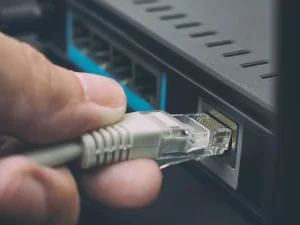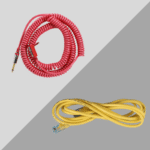Cable Internet: Everything You Need to Know
Cable internet is one of the most popular and widely used broadband internet connections in the world. It uses the same coaxial cables that deliver cable television signals to provide high-speed internet access to homes and businesses. In this article, we'll explore what cable internet is, how it works, its benefits, and how it compares to other types of internet connections like DSL and fiber-optic.
What is Cable Internet?
Cable internet refers to a broadband internet connection delivered through coaxial cables, which are the same cables used for cable television (TV) service. Unlike traditional dial-up internet or DSL (Digital Subscriber Line), which transmits data over phone lines, cable internet uses a dedicated cable TV network infrastructure to offer faster and more reliable internet speeds.

what is cable internet
How Does Cable Internet Work?
Cable internet works by transmitting data over the same coaxial cables that deliver cable TV services to your home. The cable modem is the key device that converts the signal from your cable line into an internet connection. Here’s how it works:
Signal Transmission: The internet service provider (ISP) sends a signal through the cable network to your home.
Cable Modem: The cable modem receives the signal and converts it into an internet connection that can be used by your devices (such as computers, smartphones, or smart TVs).
Wi-Fi Router: The cable modem is usually connected to a router, which broadcasts a Wi-Fi signal so you can access the internet wirelessly on multiple devices.
Advantages of Cable Internet
Cable internet is known for its high-speed capabilities, making it a great option for many households and businesses. Here are some of its major benefits:
Fast Speeds:
One of the main advantages of cable internet is speed. Most cable internet providers offer speeds ranging from 25 Mbps to 1 Gbps, making it suitable for activities such as streaming HD or 4K content, gaming, video conferencing, and more.
With speeds this fast, users can experience minimal buffering and faster downloads/uploads compared to other types of internet connections.
Reliable and Stable:
Cable internet offers a more stable connection compared to older technologies like dial-up and DSL. While speed can fluctuate slightly during peak usage times (when more people are using the internet), it tends to be more consistent than DSL, which can be affected by distance from the service provider’s hub.
Availability:
Cable internet is widely available in urban and suburban areas, especially in places where cable TV services are already offered. This makes it an accessible option for many people.
Supports Multiple Devices:
With cable internet, multiple users can stream, game, or work online simultaneously without significant slowdown. The higher speeds available with cable internet make it a great choice for households with multiple users who require reliable connections.
Bundled Services:
Many internet service providers (ISPs) offer bundled packages, where you can combine your cable internet service with other services like cable TV or home phone at a discounted price. This can be a cost-effective way to get all the services you need in one package.
Disadvantages of Cable Internet
While cable internet has many advantages, it does come with some limitations:
Shared Bandwidth:
Cable internet uses a shared network. This means that if many people in your neighborhood are using the internet at the same time, it could cause slower speeds due to the shared bandwidth. However, this issue is usually more noticeable during peak hours.
Availability in Rural Areas:
While cable internet is widely available in cities and suburbs, it may not be as accessible in rural areas. For those living in remote locations, cable internet might not be available, and alternative options like DSL or satellite internet may be necessary.
Price:
Cable internet can sometimes be more expensive than DSL or satellite internet, especially if you're looking for high-speed plans. However, prices can vary depending on the provider and region.
Cable Internet vs. Other Internet Types
1. Cable Internet vs. DSL
DSL (Digital Subscriber Line) uses phone lines to deliver internet, whereas cable internet uses coaxial cables.
Cable internet is generally faster and more reliable than DSL, especially for high-demand activities like video streaming and gaming.
However, DSL is often cheaper and can be a good option for those who don’t need extremely high-speed connections.
2. Cable Internet vs. Fiber-Optic Internet
Fiber-optic internet offers faster speeds and is more future-proof than cable internet. Fiber-optic technology uses light signals to transfer data, which results in much faster and more reliable connections.
However, fiber-optic availability is still limited in many areas, and it tends to be more expensive than cable internet. Fiber-optic is ideal for high-demand users who need the fastest speeds available, but cable internet is a strong alternative for most users.
3. Cable Internet vs. Satellite Internet
Satellite internet is typically slower than cable internet, with higher latency. It is also more affected by weather conditions.
Cable internet is usually more reliable and offers faster speeds, making it a better option for most households.
How to Choose the Best Cable Internet Provider?
When choosing a cable internet provider, consider the following factors:
Speed Requirements: Assess your household's internet needs. If you need high-speed internet for activities like gaming or 4K streaming, look for a provider that offers speeds of at least 100 Mbps or higher.
Data Caps: Some ISPs impose data limits on cable internet plans. Be sure to choose a plan with no data cap or one that offers enough data for your household's usage.
Cost: Compare prices for the speeds and services you need. Many ISPs offer discounts or bundles with other services like TV or phone.
Customer Service: Check reviews for customer service and reliability to ensure you're getting good support if any issues arise.
Conclusion
Cable internet is an excellent choice for most users who need fast, reliable, and affordable internet for streaming, gaming, and everyday activities. It offers high speeds, stability, and availability in many regions, especially in urban and suburban areas. While it has some drawbacks like shared bandwidth and higher costs compared to DSL, it remains a solid option for many households. When choosing a provider, make sure to consider speed requirements, cost, and customer service to find the best plan for your needs.





